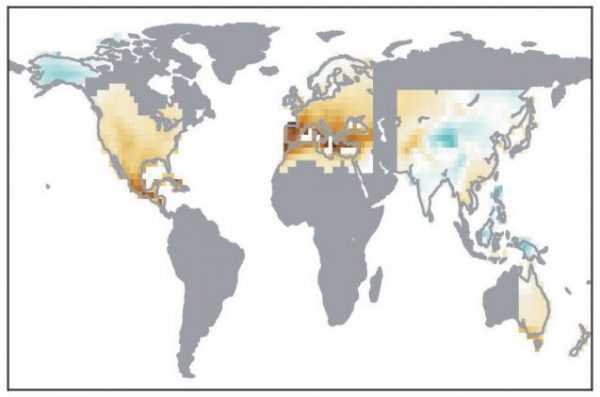
This past winter, parts of Southeast Alaska experienced severe drought. It forced some communities to switch over from hydroelectricity to diesel. But a new study published in the journal Nature suggests that’s probably not a preview of what’s to come in Alaska.
Scientists are getting a better handle on the leading causes of global drought and where the future is headed.
Jason Smerdon is a paleoclimatologist at the Lamont-Doherty Earth Observatory of Columbia University. It’s a job title that befuddles some strangers.
“A paleoclimatologist is anyone who studies the climate of the past,” Smerdon said.
He’s interested in the past because it holds significant clues about the global weather events we’re experiencing now.
Smerdon combed through tree ring records from a thousand different sites all around the world, including Alaska. Some of the records were 2,000 years old, while others were from the turn of the century.
He created a kind of timeline, with wetter or dryer years reflected in the width of the tree rings.
Smerdon compares the climate model to listening to a rock song, where a trombone represents human-caused carbon emissions.
“We can’t quite hear it with all the other instruments when it’s playing really quietly,” Smerdon said. “But as it gets louder and louder and more punctuated, we can really pick it out more robustly.”
The other instruments are different variables: solar energy, volcanoes, naturally occurring green house gasses. But it’s the trombone that scientists have observed blaring through the noise.
“The drying regions and the wetting regions that are identified in this pattern become a map for the future, as we think about a much warmer world with much higher levels of greenhouse gasses in atmosphere,” Smerdon said.
Smerdon says, for the most part, the data points to the likelihood of some drier places becoming drier and wetter places becoming wetter.
And yes, Southeast Alaska has been experiencing a drought recently, but Smerdon doesn’t think that’s necessarily the new norm.
“So the expectation is for precipitation to increase in Alaska by 10-20% under business as usual scenarios,” he said.
That’s by the end of this century — if nothing changes. Smerdon says a loss of sea ice in the Arctic is one of the things that could contribute to these warmer, wetter conditions.
He cautions while that might sound like music to some hydroelectric companies’ ears, it could mean Alaska can expect more seasonal variability, and less snowpack which some reservoirs rely on.




